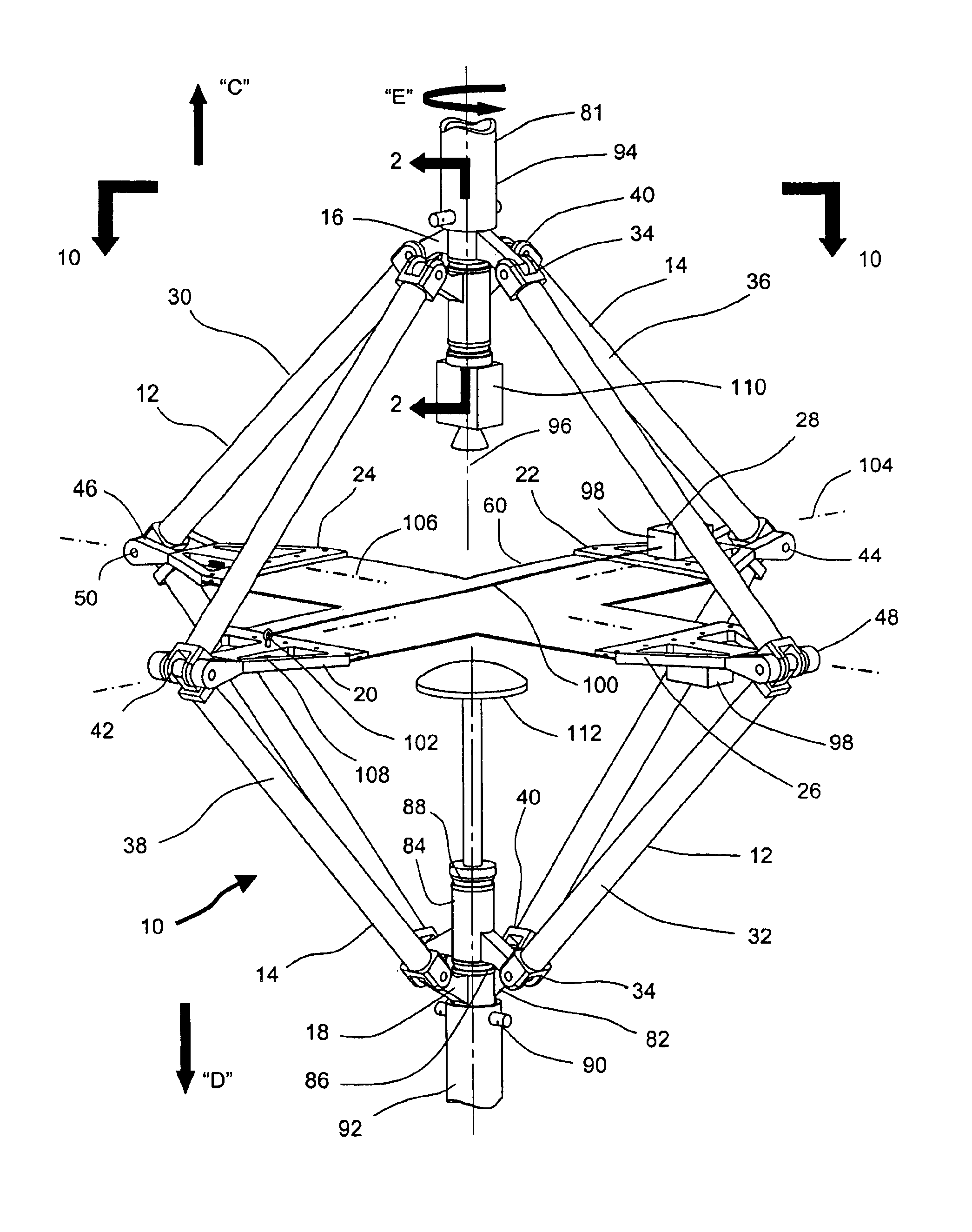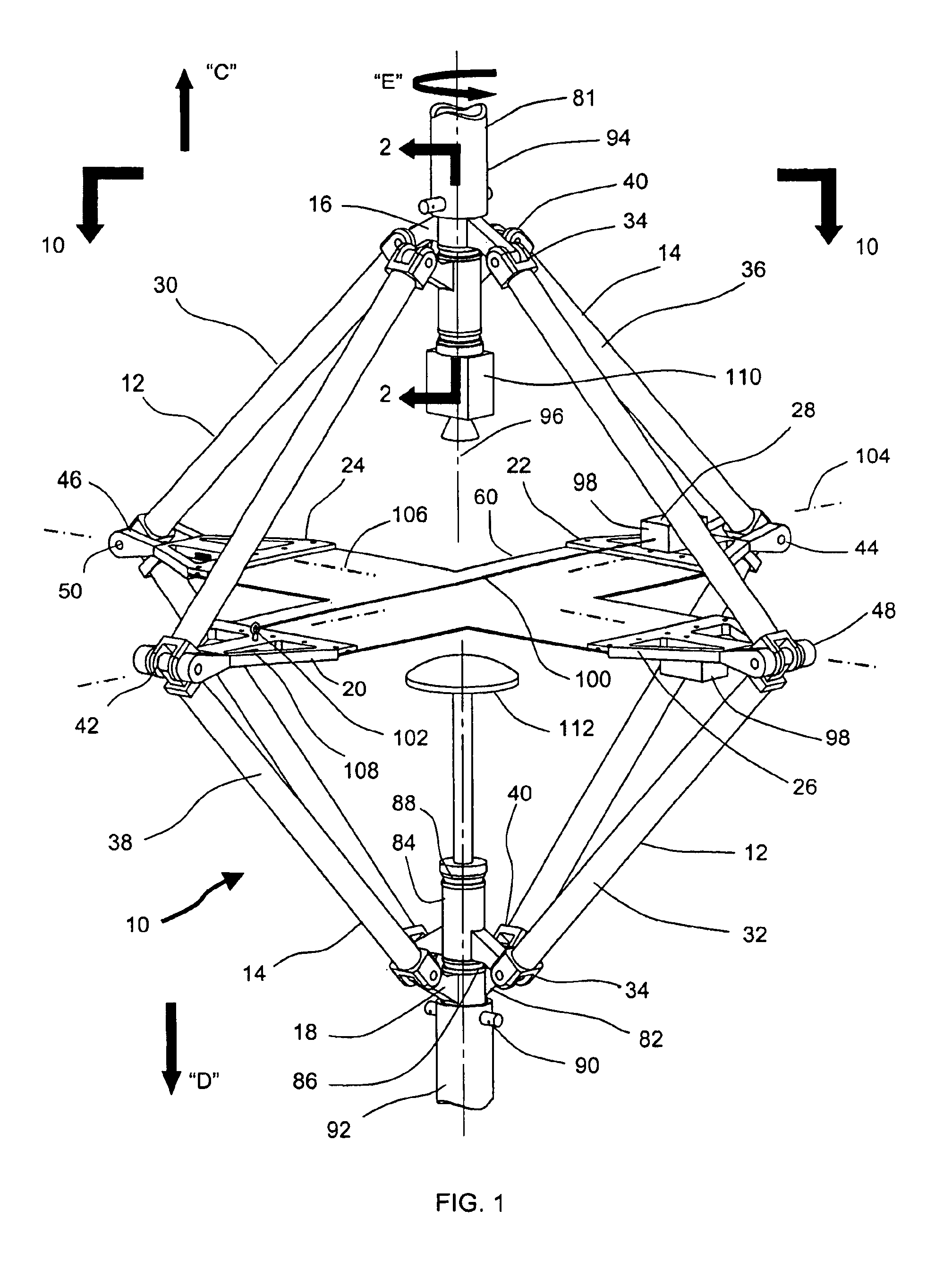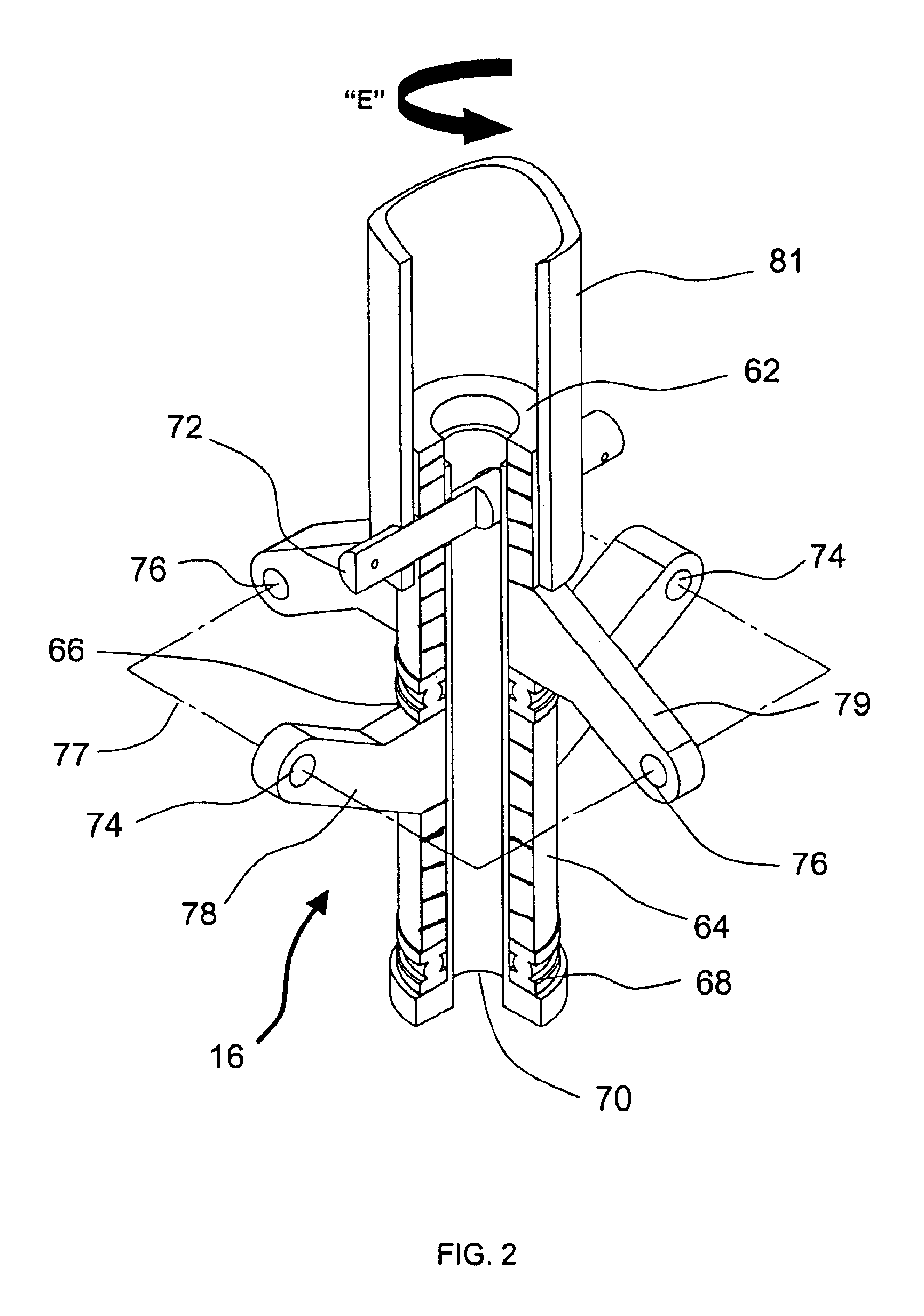Combined in-plane shear and multi-axial tension or compression testing apparatus
a technology of multi-axial tension and compression testing, which is applied in the direction of measurement devices, material strength using repeated/pulse forces, instruments, etc., can solve the problems of complex responses, unrefined structure technology, and difficult to analyze reliable structures. achieve the effect of increasing the distance between the corresponding load transfer plate and providing flexibility
- Summary
- Abstract
- Description
- Claims
- Application Information
AI Technical Summary
Benefits of technology
Problems solved by technology
Method used
Image
Examples
Embodiment Construction
Referring now to the drawings wherein like numerals refer to like elements throughout the several views, one sees that FIG. 1 depicts a preferred embodiment of a testing apparatus 10 of the present invention. As shown in the figure, the apparatus 10 for biaxial loading generally comprises four-bar linkages 12 and 14 defining a perimeter of a variable rhombus shape, a first (or as shown) a top joint assembly 16, a second (or as shown) a bottom joint assembly 18, load transfer plates 20, 22, 24 and 26 and an associated strain and displacement measurement system 28.
The linkage 12 includes two pairs of oblong and rigid members 30 and 32. Each end of each member is rigidly connected to a bracket 34 in which each bracket is pivotally connected to the top joint assembly 16 and the bottom joint assembly 18. The linkage 14 includes two pairs of oblong and long rigid members 36 and 38. Each end of each member is rigidly connected to a bracket 40 in which each bracket is pivotally connected to...
PUM
 Login to View More
Login to View More Abstract
Description
Claims
Application Information
 Login to View More
Login to View More - R&D
- Intellectual Property
- Life Sciences
- Materials
- Tech Scout
- Unparalleled Data Quality
- Higher Quality Content
- 60% Fewer Hallucinations
Browse by: Latest US Patents, China's latest patents, Technical Efficacy Thesaurus, Application Domain, Technology Topic, Popular Technical Reports.
© 2025 PatSnap. All rights reserved.Legal|Privacy policy|Modern Slavery Act Transparency Statement|Sitemap|About US| Contact US: help@patsnap.com



